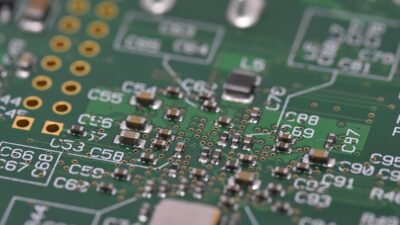As the gaming landscape continues to evolve, delivering richer graphics and more immersive experiences, AMD’s Radeon graphics cards are stepping up to the challenge with their latest architecture improvements. The new Radeon architecture, often referred to as RDNA (Radeon DNA), promises significant advancements that not only boost raw performance but also enhance power efficiency, ray tracing capabilities, and more. This article takes a closer look at what the new Radeon architecture means for gamers.
Understanding RDNA Architecture
AMD first introduced RDNA architecture in 2019 with the Radeon RX 5000 series, showcasing a shift away from the earlier Graphics Core Next (GCN) architecture. The latest iteration, RDNA 3, takes several giant leaps forward, focusing on core improvements that extend beyond just raw horsepower.
Key Features of RDNA 3
-
Performance and Efficiency:
The RDNA 3 architecture harnesses a smaller manufacturing process, potentially leveraging 5nm technology, which adeptly increases transistor density. This allows for better performance per watt, meaning that gamers can expect higher frame rates without a corresponding spike in power consumption. This efficiency will translate to cooler, quieter gaming experiences and better long-term viability for graphic cards. -
Unified Memory Architecture:
RDNA 3 supports a Unified Memory Architecture, which allows the CPU and GPU to share memory resources more efficiently. This can significantly impact load times and performance in memory-intensive applications, thereby benefiting not only gaming but potentially creative workflows. -
Ray Tracing Capabilities:
Directly competing with NVIDIA’s RTX technology, RDNA 3 optimizes ray tracing performance through hardware enhancements and improved software tools. The architecture includes dedicated ray accelerators that enable more realistic lighting, shadows, and reflections, enhancing the visual fidelity of modern games. -
Infinity Cache:
An intriguing feature that first appeared in RDNA 2, Infinity Cache appears to be further refined in RDNA 3. This high-bandwidth cache reduces the reliance on traditional memory bandwidth, allowing for faster data access and processing. Gamers can expect smoother gameplay at high resolutions thanks to this technology. - Variable Rate Shading (VRS):
The new architecture supports advanced techniques such as Variable Rate Shading, which intelligently prioritizes rendering based on focus and depth in a scene. This not only boosts performance but also maintains visual quality where it matters most.
What It Means for Gamers
Enhanced Gaming Experiences
With each leap in architecture, developers are given the tools to create even more immersive and visually stunning gaming experiences. Gamers can expect smoother frame rates, improved resolutions, and richer environments. Titles that employ ray tracing and other advanced features will see noticeable improvements, allowing for a more lifelike experience.
Competitive Edge
In fast-paced gaming genres, such as first-person shooters or multiplayer online battle arenas, every millisecond counts. The performance enhancements of RDNA 3 may provide players with an edge, helping to maintain those critical high frame rates, ensuring that inputs are translated smoothly onto the screen.
Future-Proofing
Given the rapid evolution of technology, having a graphics card built on the latest architecture means better long-term viability. As game developers push the envelope with graphics and performance fidelity, RDNA 3 cards are poised to handle these advances without needing an immediate upgrade.
Entry-Level to High-End Performance
AMD’s strategy with the RDNA architecture caters to a variety of gamers, from budget-conscious players to hardcore enthusiasts. With a lineup that spans from mid-range to high-end GPUs, there’s something for everyone, ensuring that gamers can find a card that meets their specific needs and preferences.
Conclusion
The new Radeon architecture represents a substantial evolution in graphics technology that is set to redefine how gamers experience visual content. From enhanced performance and efficiency to advanced features like ray tracing and Variable Rate Shading, RDNA 3 encapsulates the future of gaming graphics. For gamers looking to upgrade their systems or build new ones, investing in hardware based on this next-gen architecture promises not only improved gameplay today but also resilience for future gaming demands. As technology continues to advance, the Radeon brand maintains its commitment to delivering competitive, cutting-edge solutions that thrill gamers around the world.

